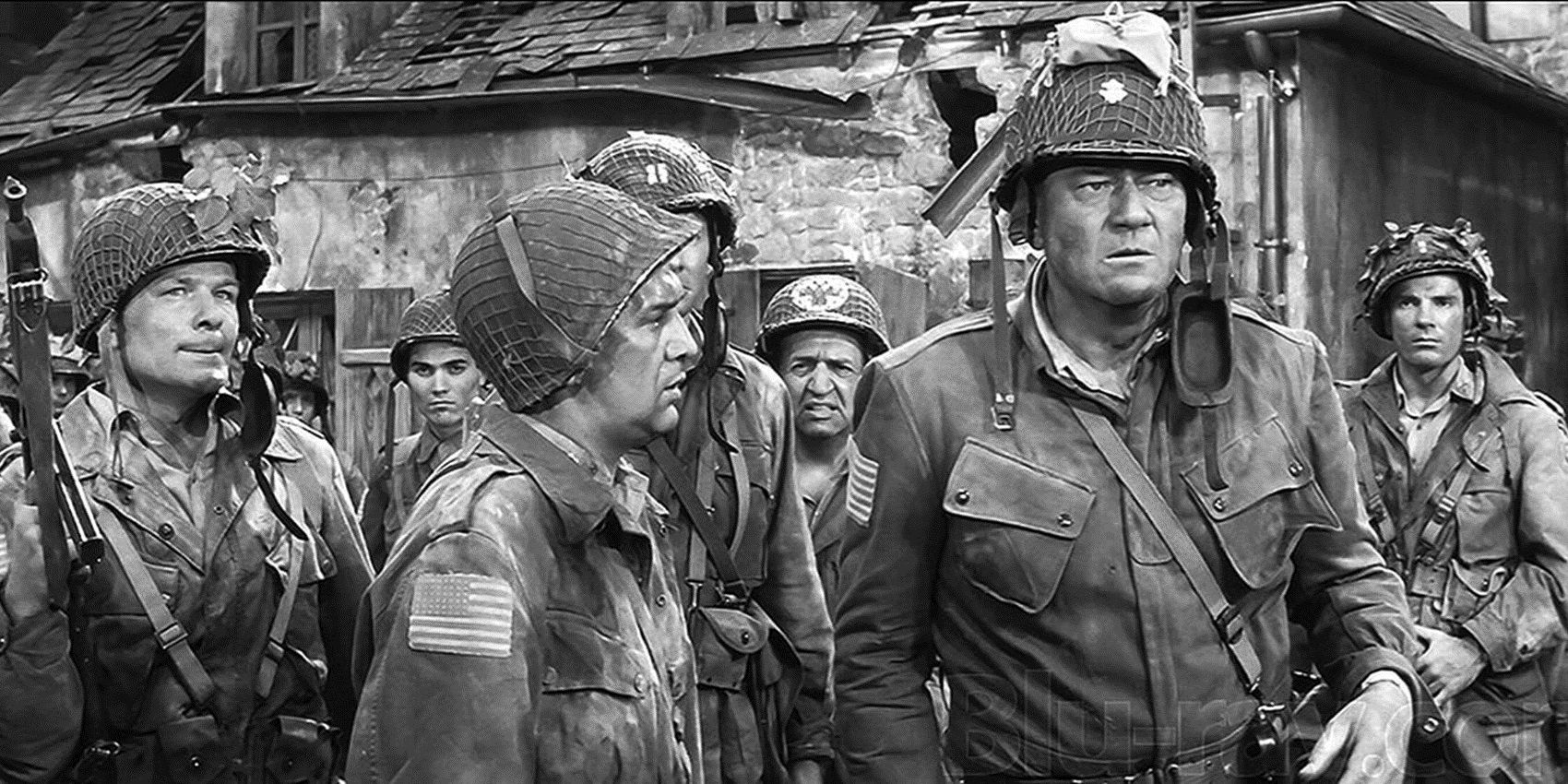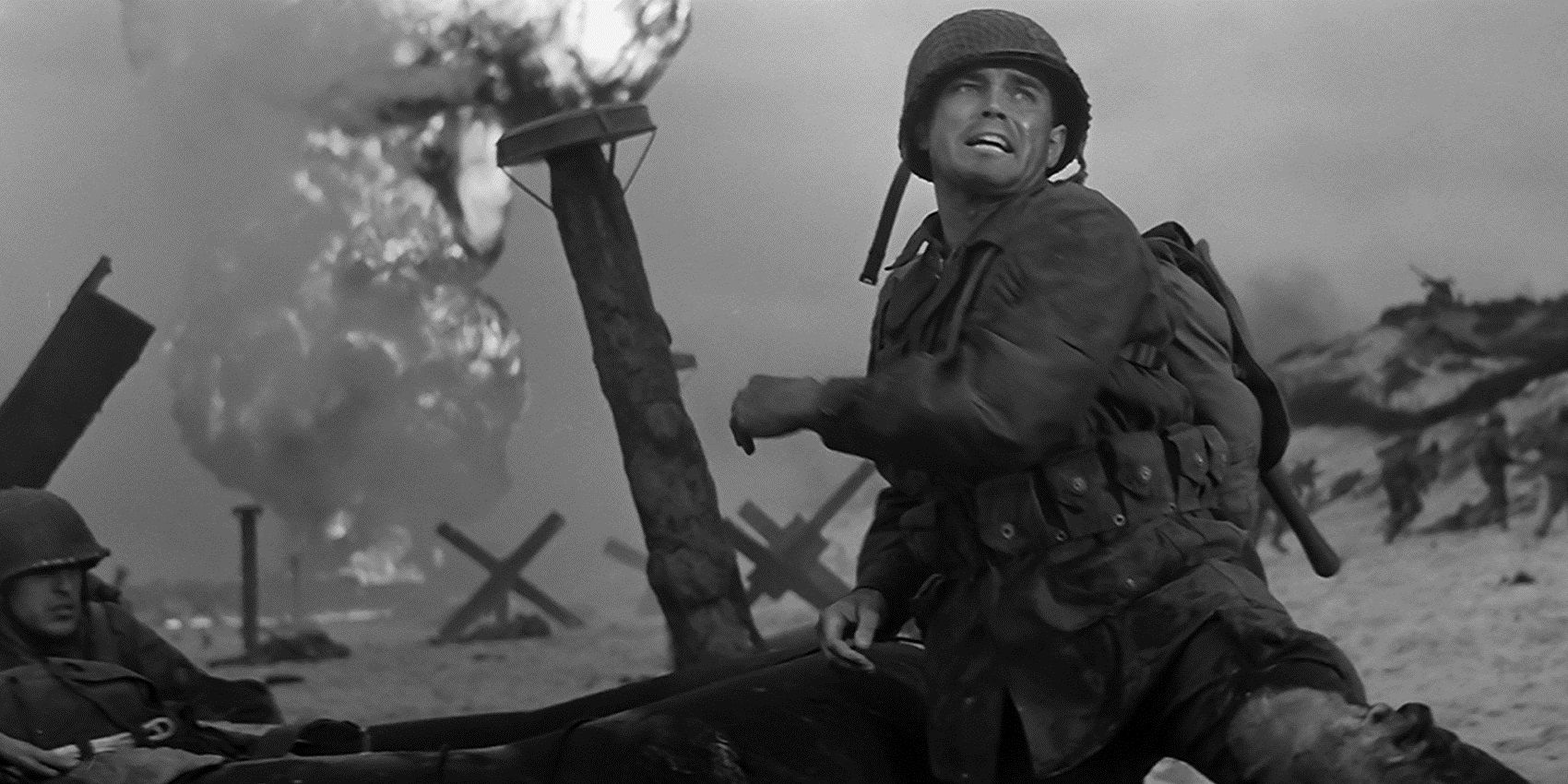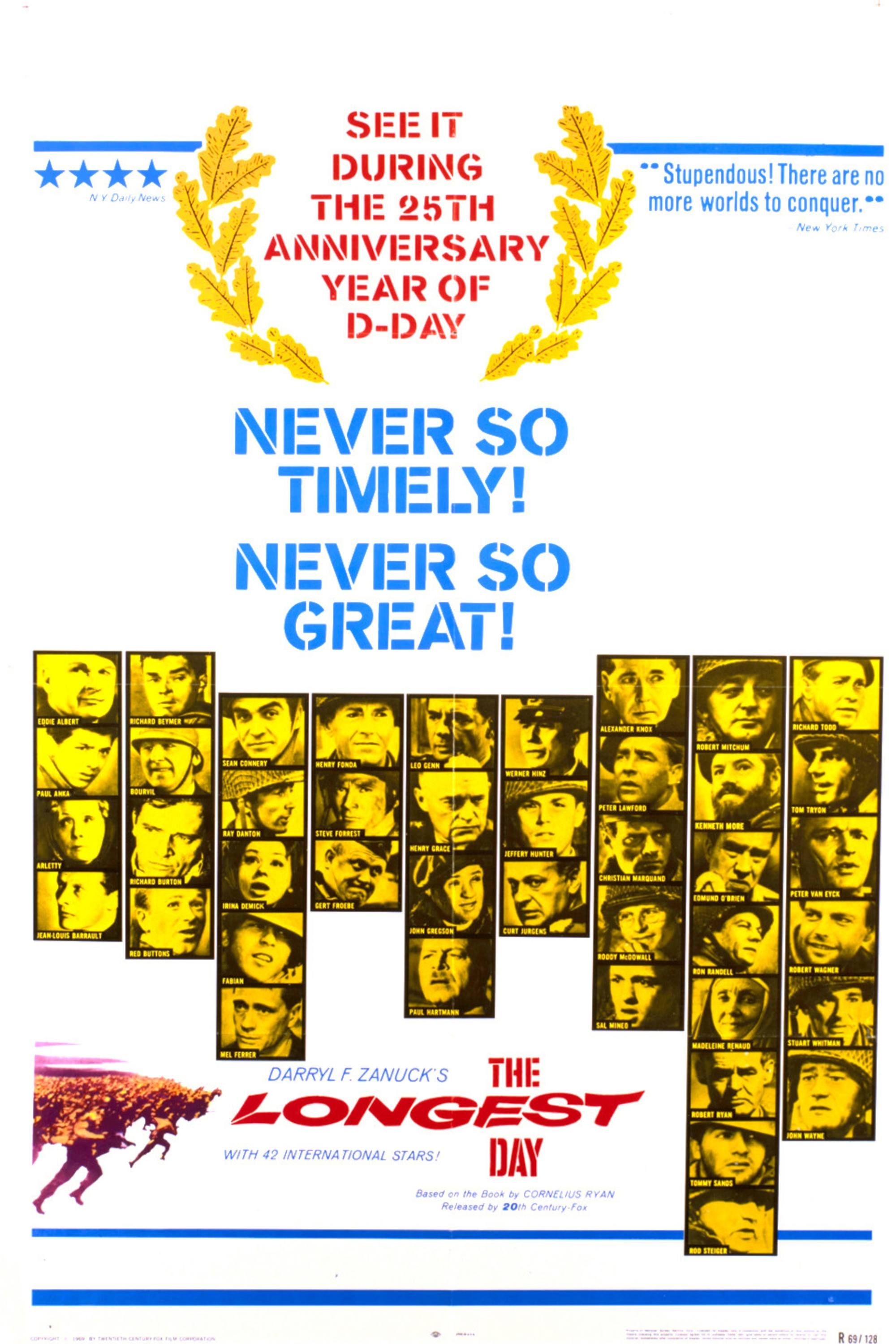John Wayne, Sean Connery, and Henry Fonda headlined an all-star ensemble cast in The Longest Day, one of the greatest cinematic portrayals of the D-Day landings. The Allied invasion of Normandy on June 6, 1944, was the largest seaborne invasion in history. Since then, filmmakers have been trying to recreate the visceral terror of D-Day on the big screen. The D-Day landings were chronicled in Budd Boetticher’s Red Ball Express in 1952, Arthur Hiller’s The Americanization of Emily in 1964, Samuel Fuller’s The Big Red One in 1980, and, of course, Steven Spielberg’s Saving Private Ryan in 1998.
But those movies usually depict the Normandy landings as a piece of a larger story. In The Big Red One, D-Day is just one of many military campaigns shown in a montage of an unnamed sergeant leading his squad over a two-year period. In Saving Private Ryan, D-Day is the opening set-piece that immerses viewers in the film’s World War II setting. They rarely focus exclusively on D-Day. But one classic war epic, released in 1962, did just that: The Longest Day shows the Normandy landings from every different perspective.
What Is The Longest Day? The D-Day Movie Explained
The Longest Day is an ambitious World War II epic with three directors

Based on Cornelius Ryan’s 1959 non-fiction book of the same name, The Longest Day chronicles the D-Day landings from the American, British, French, and German perspectives. It was a collaborative effort between three directors: Andrew Marton handled the American scenes, Ken Annakin handled the British and French scenes, and Bernhard Wicki handled the German scenes. The Longest Day was such an ambitious, monumental undertaking that it took three filmmakers to make it happen. Servicemen from both the Allied and Axis sides of the D-Day landings acted as consultants on the film to ensure its historical accuracy.
Although it’s a Hollywood dramatization, The Longest Day was shot in the style of a docudrama to make it feel as realistic as possible. When it was released in 1962, it was widely praised by critics and became a massive box office success. It was lauded for its blend of an epic scale, capturing the full extent of the conflict, with personal details peppered in for an intimate feel. The Longest Day was nominated for five Oscars at the 35th Academy Awards, including Best Picture, and won Best Cinematography (in the black-and-white category) and Best Special Effects.
The Longest Day Has A Huge Cast
Richard Burton, Robert Mitchum, Rod Steiger – the list goes on
The Longest Day has one of the biggest and most star-studded casts in Hollywood history. The massive ensemble is headlined by John Wayne, who was the most famous western movie star at the time; Sean Connery, who started playing James Bond in the same year; and Henry Fonda, cinema’s most beloved everyman. The cast also features seven-time Oscar nominee Richard Burton, hot off his Tony-winning turn in Camelot; Robert Mitchum, renowned for his antihero roles; and Rod Steiger, who played Marlon Brando’s brother in On the Waterfront.
There are so many huge stars in the cast of The Longest Day that most of them are relegated to cameo appearances. The supporting cast features George Segal, who would later co-star with Burton in Who’s Afraid of Virginia Woolf?; Gert Fröbe, who would later co-star with Connery in Goldfinger; and A Kiss Before Dying star Robert Wagner. The movie also has appearances by Kenneth More, Richard Todd, Steve Forrest, Red Buttons, Peter Lawford, Eddie Albert, Jeffrey Hunter, Stuart Whitman, Curd Jürgens, and Paul Anka.
The Longest Day Is An All-Time Great D-Day Movie
It captures the epic scope of the conflict

There are a ton of great D-Day movies out there – 1945’s True Glory, 1950’s Breakthrough, 1965’s 36 Hours, 1985’s Code Name: Emerald – but, more than 60 years later, The Longest Day still holds up as one of the very best. It captures the epic scope of the conflict from every angle, but not at the expense of drama. The Longest Day manages the perfect balance between historical fact and human emotion. The whole thing plays as a documentary report of the events of the D-Day landings, but that could come off as very dry and impersonal.
The Longest Day mixes in plenty of personal accounts from the frontlines, so it captures the Normandy landings on a micro scale as well as a macro scale. It delivers all the crucial facts about how the invasion went down – the strategy, the execution, the aftermath – but it also delivers a handful of personal perspectives to keep it grounded in human experience. Anyone who wants a deeper understanding of D-Day (or just a mind-blowing cinematic experience) should check out The Longest Day.

The Longest Day
The Longest Day is a 1962 war film that chronicles the D-Day invasion of Normandy on June 6, 1944, from both the Allied and German perspectives. The ensemble cast includes John Wayne, Robert Mitchum, and Richard Burton, among others. Directed by multiple filmmakers, the film focuses on the planning and execution of the operation, offering a detailed and multi-faceted view of one of World War II’s pivotal moments.
- Director
-
Ken Annakin
, Andrew Marton
, Bernhard Wicki
, Darryl F. Zanuck - Cast
-
Eddie Albert
, Paul Anka
, Arletty
, Jean-Louis Barrault
, Richard Beymer
, Hans Christian Blech - Runtime
-
178 minutes




